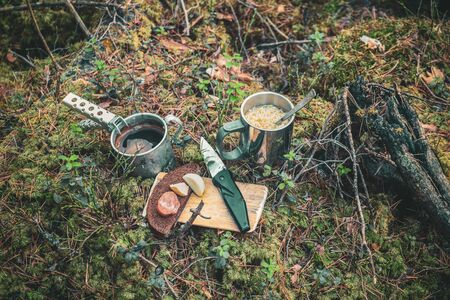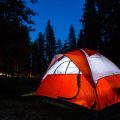Understanding British Weather and Mud
If you’ve ever camped in the UK, you’ll know there’s something delightfully unpredictable about British weather. One moment, the sun peeks through the clouds, warming your cheeks as birds sing overhead. The next, a sudden drizzle rolls in, and before you know it, little puddles begin to dot your campsite like nature’s own hopscotch. It’s all part of the great British outdoor experience! But with that charm comes a challenge: mud.
Unlike camping trips in drier countries, setting up camp here means accepting that rain is more friend than foe—it’s what keeps our forests lush and our fields green. However, those same showers can quickly turn grassy pitches into squelchy playgrounds for children and parents alike. Wellies become a must-have accessory, and “wiping your feet” turns into a full-on family ritual at the tent door.
Managing mud isn’t just about keeping things tidy; it’s about making sure everyone feels cosy and comfortable after a long day of exploring. Dry socks and clean sleeping bags help keep spirits high, while clever mud management keeps your home-from-home inviting—no matter what the weather brings.
Choosing the Perfect Spot: Where to Pitch Your Tent
When it comes to camping in the British outdoors, picking the right spot for your tent is just as important as packing your wellies. Our unpredictable weather can turn a field into a mud bath overnight, so it’s vital to choose wisely to keep your family dry and happy. Here are some top tips for finding that elusive dry patch where little explorers can adventure without soggy socks:
Top Tips for Dry, Safe Camping Spots
- Look for Higher Ground: Always aim to pitch on a gentle rise rather than in a dip or hollow—water will naturally drain away from elevated spots, reducing the risk of waking up in a puddle.
- Avoid Obvious Mud Traps: Steer clear of riverbanks, lake edges, and the bottom of slopes where rainwater gathers. These areas might look inviting but often become boggy fast.
- Check for Vegetation: Grassy areas with firm turf are ideal. Avoid places where the ground feels squishy or where moss and reeds grow thickly; these are signs of persistent dampness.
- Consider Shelter: While pitching under large trees may offer some rain protection, falling branches (especially after a storm) can be risky. Instead, seek out natural windbreaks like hedges or low stone walls.
- Room to Roam: Make sure there’s enough open space around your tent for kids to play and explore—without wandering straight into the nearest puddle!
Quick Reference: Best & Worst Ground Choices
| Best Choices | Why? | Worst Choices | Why? |
|---|---|---|---|
| Slight hilltops or rises | Good drainage, less chance of flooding | Dips or hollows | Collect water during rain |
| Firm grassy patches | Softer underfoot, dries quickly | Muddy or mossy areas | Poor drainage, stays wet longer |
| Near but not under small trees/hedges | Sheltered from wind, not at risk from falling branches | Directly beneath large trees | Falling branches hazard, drops sap and debris |
| Away from water bodies (by at least 50m) | Avoids midges and sudden water rise risks | Lakeshores and riverbanks | Mud prone, can flood quickly, more insects |
A Family-Friendly Approach to Site Selection
The fun of camping is all about making memories together—even if it’s just giggling over muddy boots! By taking a few moments to assess your surroundings before you pitch up, you’ll set your family up for a drier, cosier adventure. Encourage children to help spot good ground—turn it into a game and let them feel like expert explorers while learning valuable outdoor skills.
With thoughtful planning, you’ll create a comfortable base camp that keeps everyone’s toes warm and dry—no matter how British the weather decides to be!
![]()
3. Creating Dry Zones with Simple Kit
When you’re out enjoying the best of the British outdoors, keeping your family’s spirits high often comes down to a little clever planning—especially when it comes to mud! Thankfully, creating dry, cheerful zones doesn’t require fancy gear. With a few trusty essentials like tarps, groundsheets, and wellies, you can set up camp for play, meals, and relaxation no matter what the weather throws your way.
The Magic of Tarps
A sturdy tarp is a parent’s best friend on a soggy day. Spread one between trees for an instant overhead shelter or peg it down as a makeshift floor. This simple sheet creates a dry space where kids can read, colour, or build dens—even if the ground beneath is squelchy. Just remember to angle it slightly so rainwater runs off instead of pooling in the middle!
Groundsheets: Your Dry Haven
Lay a thick groundsheet under picnic blankets or playmats to keep bottoms dry during snack time or board games. Look for waterproof options from local outdoor shops or even use an old shower curtain in a pinch. For added warmth and comfort, layer a fleece blanket on top—it keeps everyone cosy while enjoying sarnies and hot chocolate together.
Welly Wisdom
No British outdoor adventure is complete without wellies! Encourage everyone—grown-ups included—to slip into their favourite pair before stepping onto the grass. Wellies aren’t just for puddle-jumping; they make moving between zones much easier and mean muddy socks are a thing of the past. Keep an old towel by your tent or car door for quick wipe-downs before heading home.
Making Mud-Free Memories
By thoughtfully setting up dry areas with these simple items, you’ll create inviting spaces where laughter and stories flow freely, rain or shine. The children will treasure these moments—building forts under tarps, tucking into sandwiches on a soft groundsheet—and you’ll have peace of mind knowing everyone’s warm and comfortable. It’s all about working with nature (and British weather) rather than against it!
Family-tested Muddy Footprint Management
Reassuring Routines for Clean Communal Spaces
Camping in the British outdoors often means a friendly battle with mud, especially when energetic little ones and four-legged companions are involved. Establishing simple routines helps keep your tent and communal spaces welcoming—no matter how many muddy footprints march in. At the heart of effective mud management is consistency: making sure everyone knows what to do before entering the tent can turn chaos into calm. Creating a ‘mud-free zone’ at the entrance is one of the most reassuring strategies for families, giving everyone (including forgetful grown-ups!) an easy way to keep things clean.
Easy Hacks for Mud-Free Living
The key is making these routines not only practical but also family-friendly. Here’s a handy table of tried-and-tested hacks to help you manage muddy mishaps, even when excitement gets the better of manners:
| Hack | How it Helps | Top Tip |
|---|---|---|
| Mud Mat or Old Carpet at Entrance | Catches mud before it enters the tent | Choose a bright colour so children spot it easily |
| Shoe Tray or Box Outside Tent | Keeps shoes contained and prevents soggy socks inside | Label trays for each family member for quick tidying-up |
| Portable Foot Wash (Bucket & Water) | Quickly rinse off wellies and paws after adventures | Add a splash of warm water on chilly days for comfort |
| Microfibre Towels by the Door | Easily wipes feet, hands, and muddy fur before entry | Hang them low so children can reach without asking for help |
| Tent Slippers or Indoor Shoes Only Rule | Keeps mud strictly outside where it belongs | Let kids choose fun slippers to encourage participation |
| “Spot-Check” Game Before Meals or Bedtime | Makes cleanliness a playful, shared responsibility | Award tiny treats or stickers for spotless feet! |
When Mistakes Happen: Keeping Calm and Carrying On
No system is foolproof, especially with excitable children (and dogs) in tow. The important thing is to keep expectations realistic and make cleaning up part of your family camping adventure. Encourage everyone to pitch in without blame. After all, some of the best stories come from those muddy misadventures that end with laughter, a cup of tea, and dry socks all round.
5. Turning Mud into Family Fun
The British outdoors is famously unpredictable, with a good chance of encountering rain and mud on any adventure. But rather than seeing mud as a nuisance, it’s the perfect opportunity to turn soggy moments into joyful family memories. Embracing the classic British weather can be a wonderful way to bond, learn, and laugh together.
Make the Most of Messy Moments
Instead of dodging puddles, encourage children to pull on their wellies and jump right in! Set up a “mud kitchen” at your campsite using old pots and spoons—let imaginations run wild as little ones create mud pies or pretend soups. These playful activities not only spark creativity but also help children develop sensory skills in a safe and supervised environment.
Muddy Nature Hunts
Transform a muddy walk into an exciting treasure hunt. Challenge kids to spot different types of leaves, animal tracks, or even worms wriggling after rainfall. Use laminated spotter sheets (easy to wipe clean!) or keep a tally on a chalkboard. This simple activity encourages curiosity about local wildlife while keeping spirits high, whatever the weather.
Obstacle Courses for All Ages
If the ground is wet and squelchy, why not design your very own muddy obstacle course? Lay out logs to balance on, mark out zig-zag paths with sticks, and use tarpaulins for crawling under. Whether you’re timing each other or just having a giggle, it’s great exercise and gives everyone a reason to embrace getting mucky together.
Building Resilience Through Play
British families know that sometimes the best memories come from unexpected challenges. Teaching children how to manage slippery surfaces or cope with soggy socks builds resilience and confidence—skills they’ll use long after the boots are cleaned. By making mud management part of your camping fun, you’ll not only keep spirits high but also create stories you’ll all cherish for years to come.
6. Packing Mud-busting Essentials
A Parent-approved Checklist for Happy Campers
If there’s one thing British families know about camping, it’s that mud is often a not-so-silent companion—especially if you’re pitching your tent anywhere from Cornwall to the Lake District. To keep the fun flowing and the grumbles at bay, packing the right kit is absolutely key. Here’s a parent-approved checklist designed to help your family face the wettest of weekends with grins instead of groans.
Waterproof Clothing for All
Start with sturdy wellies and waterproofs for every member of the family—yes, even the dog! Look out for lightweight yet effective raincoats and overtrousers. Don’t forget extra socks: there’s nothing quite as comforting as slipping into a dry pair after a puddle mishap.
Ground Protection
Packing tarpaulins or heavy-duty groundsheets is a must for keeping your sleeping areas and communal spots dry. Layering a tarp beneath your tent or creating a makeshift porch with an old shower curtain can make all the difference in preserving those precious dry zones.
Handy Clean-up Tools
Bring a soft-bristled brush or two for de-mudding boots and shoes before anyone enters the tent. Wet wipes (biodegradable, if possible!) are invaluable for quick hand clean-ups, while microfibre towels offer speedy drying power without bulking up your rucksack.
Cosy Comforts
A stash of spare blankets and fleeces ensures everyone stays warm if clothes get damp. Pop some hot chocolate sachets into your pack for morale-boosting treats on chilly afternoons—because nothing says ‘British camping’ like warming up together under canvas with a cuppa!
Extra Bits to Consider
- Plastic bags for storing muddy gear until home time
- Small doormat for outside the tent entrance
- Portable washing line for hanging soggy socks and mittens
With these essentials ticked off, even an unexpected downpour can become part of your family’s outdoor adventure story—mud, smiles, and all!


